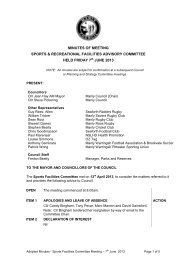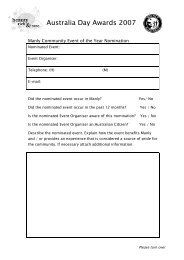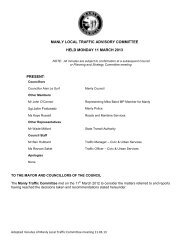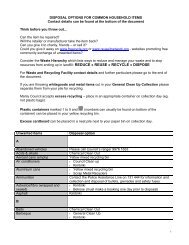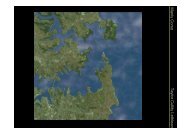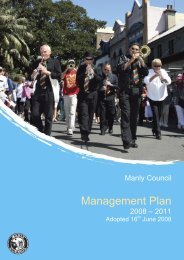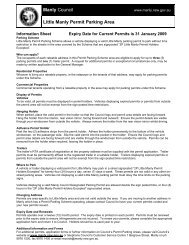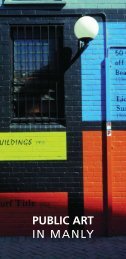Manly Lagoon Dredging Project - Manly Council - NSW Government
Manly Lagoon Dredging Project - Manly Council - NSW Government
Manly Lagoon Dredging Project - Manly Council - NSW Government
- No tags were found...
Create successful ePaper yourself
Turn your PDF publications into a flip-book with our unique Google optimized e-Paper software.
<strong>Manly</strong> <strong>Lagoon</strong> <strong>Dredging</strong> <strong>Project</strong> – Review of Environmental FactorsPrepared for <strong>Manly</strong> and Warringah <strong>Council</strong>s5.2 Climate and Air QualityExisting EnvironmentThe closest operating Bureau of Meteorology (BoM) weather station to the proposed workssite is the Sydney (Observatory Hill) weather station (Site Number: 066062), locatedapproximately 11km distant in a south-west direction. A search of the BoM Climate Statisticsfor Australian Locations (on 10 July 2009) revealed a range of statistics for the area, detailedbelow. Due to the proximity and the relatively consistent coastal location of the proposed siteand the Sydney (Observatory Hill) weather station, the climate statistics below can beconsidered representative of conditions at the proposed works site.Mean maximum temperatures range from 16.3°C in July to 25.9°C in January, whilst meanminimum temperatures range from 8.0°C in July to 18 .8°C in February. The wettest periodfor the area is between February and June, with the highest average monthly rainfallrecorded in June (130.6mm). The driest period of the year on average is between Augustand December, with the lowest average monthly rainfall recorded in September (69.4mm)(BoM, 2009).Wind data for the Sydney (Observatory Hill) weather station shows that average monthlywind speeds in the afternoon (3pm) are substantially higher than in the morning (9am).Average monthly afternoon wind speeds are particularly high (>17km/h) from August toJanuary. The highest average monthly wind speed in the morning is recorded in August(13.3km/h), and in the afternoon is recorded in December (19.5km/h) (BoM, 2009). Due tothe coastal location of <strong>Manly</strong> <strong>Lagoon</strong>, as opposed to the harbour location of the Sydney(Observatory Hill) weather station, wind speeds at the proposed works site may be slightlyhigher.Figures 5.3 and 5.4 give a guide to the varying degrees in wind direction and velocity in themorning and afternoon for each of the months of the year using data from the Sydney(Observatory Hill) weather station (Site Number: 066062), respectively. Winter winds aregenerally westerlies in the morning, remaining as westerlies or occasionally shifting tosoutherlies later in the day. In spring the prevailing morning winds are generally westerlies,changing to easterlies in the afternoon. In summer the prevailing morning winds aresoutherlies, changing to easterlies in the afternoon. Autumn winds are generally westerlies inthe morning, and predominantly easterlies in the afternoon (BoM, 2009). Wind direction isgenerally more variable in the summer and autumn months, and wind speeds are generallyhigher in the spring and summer, particularly in the afternoons, as discussed above.2 July 2010 Cardno (<strong>NSW</strong>/ACT) Pty Ltd 51H:\Doc\2010\Reports.2010\Rep2580v4.doc



